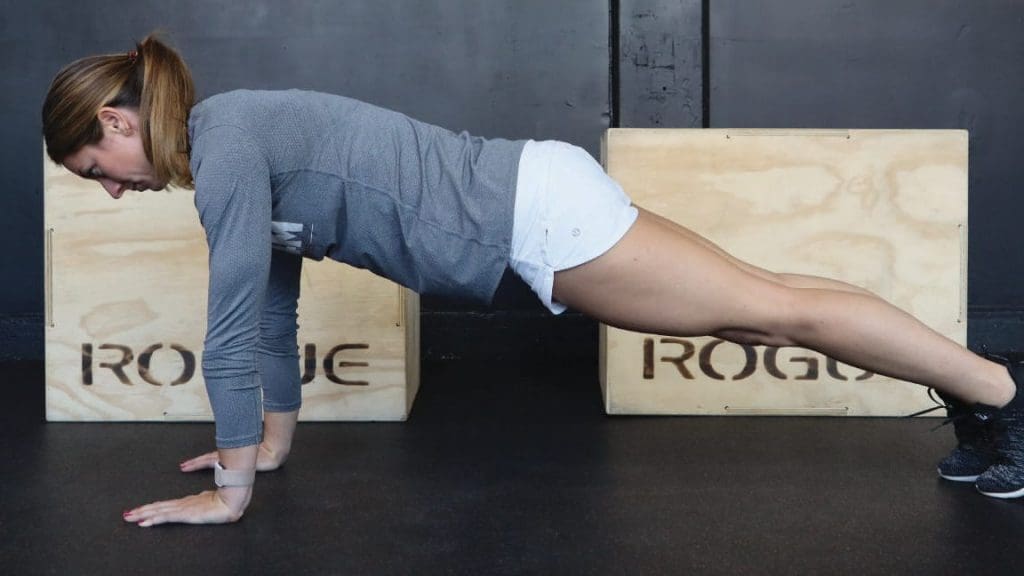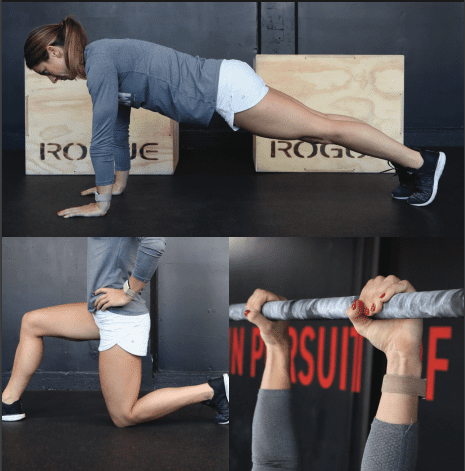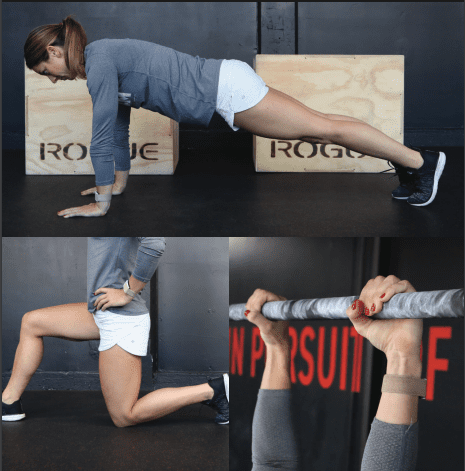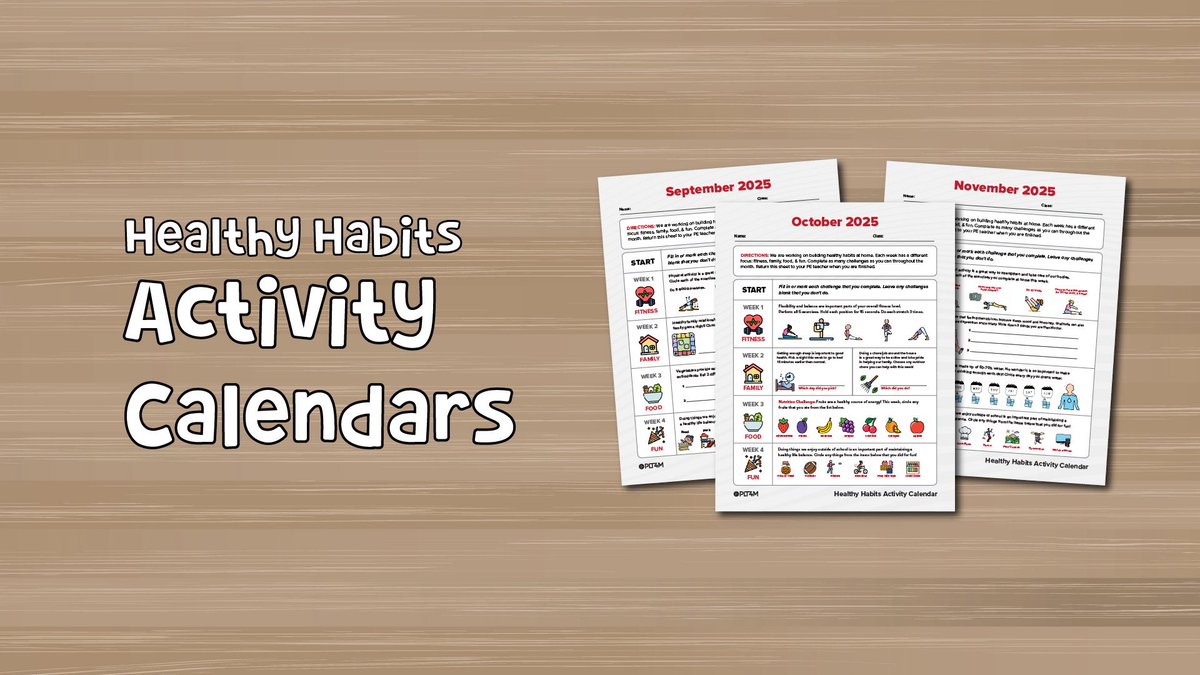The push, pull, hinge, squat, and lunge are found in almost any human movement training. From foundational exercises to advanced strength training, to yoga, foundational movement patterns are the cornerstone for almost all exercise and fitness. Let’s break it all down in this foundational movement patterns article!
Benefits of an Active Lifestyle
We know all about the benefits of an active lifestyle.
Regular physical activity has been proven to elevate mood, increase academic performance, stave off chronic disease, elevate our physical performance, and generally improve the total wellness of every individual.
Simply spending more time moving, and less time stuck in our sedentary lifestyles in front of computers or hunched over cell phones goes a LONG way.
But, when it comes to intentional exercise, what should we be doing?
Due to the popularization and commercialization of fitness in recent decades, there has been no shortage of “fitness trends” or “experts” touting one form of training over all others.
The truth is, though, that when it comes to exercise, there is no one type that reigns supreme.
Foundational Human Movement Posters
Help your students master the foundational human movements with these ready to print posters.
Forms of Exercise
There are many ways to get in shape.
Whether it be going out for a walk or run, taking a Barre class, or hitting the weight room, it’s all an effort to improve your wellness through exercise.
While there is no definitive list, it is fair to say that most exercise can be grouped into a handful of categories. Below is a broad, but useful classification system:
Strength/Resistance (Power Lifting, Bodybuilding, Bodyweight Training…)
Aerobic Capacity (Walk/Jog/Bike…)
Speed/Power (Jumping, Sprinting, Olympic Lifting…)
Stability (Balance, Core, Coordination…)
Mobility (Yoga, Stretching, Rolling)
Frequently, these concepts overlap to a large degree. As with most things, it is important to engage in a balanced approach to physical activity and fitness.
However you decide to pursue fitness, though, it is imperative that you do so upon a concrete foundation of proper movement.
The Foundational Movement Patterns
Movement is the foundation upon which all fitness and exercise rests.
Your body is built to move in specific ways. In fact, there are a handful of movement patterns through which your body is intended to work no matter the environment or activity.
These are widely known as the “Foundational Movement Patterns.” (You may have also have heard them be called fundamental movement patterns, foundational human movements, etc.)
Learning, practicing, and mastering these basic human movements are the keys to engaging in any physical activity safely, effectively, and consistently for a long period of time.
At PLT4M, we develop all of our training around six foundational human movement patterns:
The Squat
The Hip Hinge
The Lunge
The Push
The Pull
Walking/Running/Carrying
These movements are considered foundational because of the very fact that your body is asked to perform them on a daily basis.
Getting into and out of your desk each day? You’re squatting. Bending over to pick that backpack up off the ground? Hinging. Getting to class in the next building? Walking (and carrying that backpack!).
If we want to perform at and feel our best, no matter the activity, we must have a firm handle on these movement patterns and the fundamental exercises that develop them.
So let’s take a look!
Bonus Content! Check out the foundational human movements video.
The Squat
Arguably the most foundational movement within any fitness or training program.
Why? It’s simple. Mastering it boasts the most bang for your buck.
Firstly, it is a movement pattern essential to our DNA. Squatting (properly) is how we were designed to sit – chairs, couches, and toilets haven’t always existed. Squatting and standing is one of the basic movements that is getting up and down.
Secondly, it is a movement that can be used to improve your performance in every way. Proper squat mechanics translate into enhanced body control in a multitude of movements, keeping you injury-free and energy efficient.
While some may claim (still?!?!) that a full range of motion squat is injurious to one’s knees, the truth is actually just the opposite. Instilling proper mechanics and adding the squat through training is actually quite rehabilitative of bad knees (and backs, hips, etc).
A good squat will set anyone up for a healthier life.
The Squat is a bilateral (two-legged) movement in which your hips descend downward (ideally below parallel) while keeping a neutral spine and ensuring your feet are fully in contact with the ground.
When many people think of “The Squat”, they think of a traditional barbell back squat. While this is one type of squat, it is only one exercise under the larger squat movement umbrella.
The most basic variation of the squat is a bodyweight squat, often called an “Air Squat”.
The Air Squat is the easiest squat variation due to the lack of any external load. For this reason, we should ALWAYS master our bodyweight squat first.
Once we have mastered the most basic of squat movements, we can begin to progress to more challenging variations. Many of these variations can be found in different strength training and weightlifting lesson plans.
Squat Movement Examples:
Air Squat
Goblet Squat
Barbell Back/Front Squat
Overhead Squat
Bonus Content! Check out this breakdown of the air squat.
The Hinge
How many times do you bend over each and every day?
The correct answer: a lot.
Every one of us performs the hip hinge movement many times throughout our daily lives. Whether it be simply picking up our backpack off the floor, or preparing to jump up for a rebound in a game of pick up basketball – we are performing this primal movement pattern whether we know it or not.
That’s why mastering this foundational human movement pattern is so important.
Learn and train the hip hinge and you’ll avoid injury, improve performance, and open up your total body mobility and stability. It’s also absolutely vital to master if you plan on training with any sort of intensity in the future – jumping, lifting, throwing, it all requires the ability to maintain a neutral spine while bending at the hips!
The hinge is defined as the ability to bend at the hip while maintaining a strong core, neutral spine, and stable lower body.
Think of a door swinging open or closed.
So too should we be able to hinge at the hip with little to no knee or upper torso movement in order to move the chest closer to the ground and back up again.
In the world of training, the hinge is often confused with the deadlift, and subsequently avoided.
While the deadlift is certainly a hinge, the hinge pattern encapsulates a greater range of movements. Instead of avoiding the movement because of a fear of something intimidating like the deadlift, we should learn the movement first in an unloaded environment.
It is critically important that we regularly work and train our hip hinge
This is why, at PLT4M, we begin the simple Bodyweight Good Morning exercise and progress upwards from there.
Hinge Movement Examples:
Bodyweight Good Morning or RDL
Med Ball Deadlift
Barbell Deadlift
Clean
Learning the hinge is hard! Check out this breakdown.
The Lunge
Single leg function is criminally overlooked in most fitness programs.
Even of those people that get into exercise on a more serious basis, many tend to go bilateral more often than not. Especially when it comes to loaded movement. While, indeed, a good chunk of our foundational movements are bilateral (and important!), you can’t overlook “unilateral”, or, single-limb work.
Very simply, unilateral training refers to any time your limbs are asymmetrical while performing the movement in question. One limb is driving the action while the other is just along for the ride, or, often, acting as a stabilizer.
Single arm rows, for example, are a unilateral upper body pulling movement.
In this case, though, we are talking about lower body, single-leg movement. More specifically, we are referring to a group of movements we have broadly classified under the label of “Lunge”.
While single leg squatting (say, the Split Squat), is clearly a unilateral lower-body exercise, we here at PLT4M place it under the larger bucket of Squatting. While some may argue that the “Lunge” encompasses any lower body movement performed with asymmetrical positioning, we do not.
It may be a simple matter of semantics, but we think it helps.
For our purposes, we like to think of the Lunge pattern separately, as any time one leg reaches OUT and AWAY from the framework of your body. It’s not just about the asymmetrical nature of the movement, but the process by which each rep achieves that asymmetry.
Think about a side lunge, a step up, or a walking lunge.
They all start in a neutral anatomical position, feet facing forward and under the hips, hips under the shoulders and so on. During each rep, one leg reaches in some direction away from this position.
Such movement is crucial to proper training, because, essentially speaking, that is the way we evolved. It’s the basis of your most primitive patterning, meaning it shares much in common with walking/running/carrying/etc (which is another of our foundational movement patterns).
Training with volume and intensity in the lunge pattern allows us to highlight and erase imbalances in a pattern we use throughout our lives without even realizing it.
As with all patterns, we begin in an unloaded environment, using the body weight alternating forward lunge, and progress from there.
Lunge Movement Examples:
Forward Lunge
Reverse Lunge
Walking Lunge
Step Up
All fundamental movements have areas for growth! Here we have a more advanced version with the goblet lunge!
The Push
There’s no shortage of upper body pushing in the average workout routine. One need look no further than to the extreme popularization of the barbell bench press amongst athletes.
In many training programs, though, the push pattern is quite often overemphasized and under-executed. Not only that, horizontal pushing tends to dominate, whereas vertical (overhead) pressing is often neglected, despite being just as important to healthy shoulder function.
To make matters worse, the press is frequently loaded up (like in the classic bench press) well before proper mechanics have ever been cemented.
Just as with all of our foundational movement patterns, we must learn to press in an unloaded environment first.
We start with the traditional Push Up
The push-up exists as our base pressing movement because it allows us to build up core stability, along with the shoulder and back strength needed to perform more advanced pushing movements like the Bench Press or Barbell Overhead Press.
Push Movement Examples:
Push Up
MB Overhead Press
Barbell Bench Press
Barbell Overhead Press
Scaling and modifying fundamental movements with basic exercises is great for newer students and athletes!
The Pull
For some reason, “Pulling”, as a fitness movement, is far less talked about than squats, presses, or a myriad of other exercises.
The importance, though, of pulling your own body to an object, or an object to your body, cannot be overstated.
In fact, pulling is a physiological necessity in order to optimize results and avoid injury. We actually know that strong and stable shoulders ultimately depend on our pulling more than our pushing – so long as we are pulling properly, and doing so into multiple movement planes, that is (horizontal and vertical, just like our push).
Thus, the act of “pulling” with the upper body is widely considered to be one of the foundational human movement patterns.
So why is it so infrequently discussed?
Well, this is likely because bodyweight pulling movements are one of the trickiest components to incorporate in a successful fitness program.
Frankly, bodyweight pulling, like the traditional pull up, is a daunting movement for MOST people, as it is extremely difficult to perform even 1 perfect rep without first practicing and developing the requisite strength and body control. When starting out, people will often avoid the movement altogether if given the chance.
Here at PLT4M, though, we firmly believe in the importance of bodyweight pulling, right from the get-go!
Thus, we begin at the easily scaled horizontal pull known as the inverted row, and progress from there.
Pull Movement Examples:
Inverted Row
Pull Up (Assisted or Full)
DB Rows/Band Rows/Barbell Rows
There are lots of ways to pull! Check out banded pulling options that make pulling an option for everyone.
Walking/Running/Carrying
When it comes to this final movement pattern, it’s easy to see the foundational role it plays within our day to day lives.
Think walking, jogging, sprinting, or carrying anything at all.
You can think of it more broadly as “gait”. It is the way our bodies were designed to move in the most literal sense. If we want to get from Point A, to Point B, we are utilizing this natural movement pattern.
As with all of our patterns, though, we must treat this pattern as something to learn and progress.
We must literally learn to walk before we run.
The simple act of walking requires single leg strength and stability, a strong core, and full body coordination. Then we can “intensity” via the speed of the movement, aka jogging or sprinting.
To help support our locomotive patterns, we can and should also incorporate various loaded carries into our training. Loaded carries help develop our core strength and ability to move against resistance.
Such ability, in turn, supports ALL six foundational movements.
“Gait” Movement Examples:
Walking
Jogging
Sprinting
Loaded Carries
Loaded carries are a simple, yet effective way to work on a fundamental human movement.
Foundational Human Movement Posters
Help your students master the foundational human movements with these ready to print posters.
Key Takeaways on Foundational Movement Patterns
Whether you prefer to be a weight room warrior, or want to master your craft as a future E-Sport legend there is no escaping the need to perform the foundational human movements.
The prevalence of these movements throughout life and sport is why we must ALL work to improve our ability and capacity to perform them.
Thankfully, there are plenty of variations and progressions available, meaning you can incorporate and train each movement without ever needing to touch a heavy weight.
What is most critical is that we train ALL six movement patterns in some way, consistently.
Doing so will not only improve your daily life right now, but it will also lead to long term health benefits, keeping you healthy, mobile, and able well into old age.
Looking for different lesson plans to develop these skills! Check out more from PLT4M’s diverse offering of high school pe lesson plans and middle school pe lesson plans.








